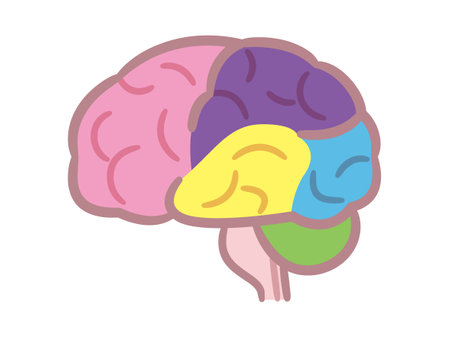Introduction to Color Psychology in Branding
When you walk into a store or scroll through your favorite shopping app, the first thing that often catches your eye is color. In the world of branding, especially in the United States, color isn’t just about looking good—it’s about creating an instant connection with consumers. Color psychology is the study of how colors influence human behavior and emotions. For brands, understanding these effects is crucial because it shapes how people perceive products, logos, and even company values.
Why Does Color Matter in American Branding?
In America’s diverse marketplace, color choices can make or break a brand’s image. Americans tend to associate specific colors with certain feelings or ideas based on cultural trends, history, and even seasonal events. For example, red often brings to mind excitement or urgency (think of fast-food chains), while blue communicates trust and reliability (think banks and tech companies). Knowing how these associations work helps brands speak the language of their customers—without saying a word.
Common Color Meanings in American Culture
| Color | Typical Associations in the U.S. | Examples of Brands |
|---|---|---|
| Red | Energy, Passion, Urgency | Coca-Cola, Target |
| Blue | Trust, Stability, Professionalism | IBM, Facebook |
| Green | Health, Nature, Growth | Whole Foods, Starbucks |
| Yellow | Optimism, Happiness, Attention-Grabbing | McDonald’s, Best Buy |
| Purple | Luxury, Creativity, Wisdom | Crown Royal, Hallmark |
| Black | Sophistication, Power, Modernity | Nike, Apple (in some campaigns) |
| White | Simplicity, Cleanliness, Purity | Apple (main branding), Tesla |
The Role of Color in Consumer Perception
For American consumers, color doesn’t just decorate a product—it tells a story. The colors brands choose set expectations for what customers will experience. If a health food brand uses green and white in its packaging, shoppers might automatically assume the product is fresh and natural. On the other hand, if a tech company uses sleek black and silver tones in its ads and website design, customers may see the brand as innovative and high-end.
Cultural Nuances to Consider
It’s important to note that not all Americans interpret colors exactly the same way. Factors like age group, geographic region, and even personal experiences can affect how someone responds to color. However, understanding general cultural associations gives brands a powerful tool for building connections and influencing buying decisions in the U.S. market.
2. Historical Examples of Color Usage in American Brands
Color psychology plays a huge role in shaping how people view brands in the United States. Over the years, many famous American companies have carefully picked their brand colors to connect with consumers and stand out from competitors. Lets take a look at some well-known brands and see how their color choices have helped them build strong identities and achieve market success.
The Power of Red: Coca-Cola & Target
Red is one of the most eye-catching and energetic colors. It is often linked to excitement, passion, and action—qualities that American consumers respond to. Coca-Cola has used its signature red for over a century, making it instantly recognizable on shelves around the world. Similarly, Target’s bold red bullseye logo creates a sense of excitement and draws shoppers into their stores. Both brands use red not only for visibility but also to create an emotional connection with customers.
The Trust Factor: Blue in American Branding
Blue is associated with trust, dependability, and professionalism. That’s why many American brands that want to be seen as reliable choose blue as their main color. For example, IBM, often nicknamed “Big Blue,” uses blue to signal stability and intelligence in the tech industry. Ford’s blue oval logo gives off a dependable, all-American vibe. Even Facebook relies on blue to make users feel comfortable and secure when connecting online.
Green Means Growth: Whole Foods & Starbucks
Green evokes feelings of health, freshness, and growth—important themes for modern American consumers who value sustainability and wellness. Whole Foods uses green in its branding to highlight its focus on natural and organic products. Starbucks’ green siren logo helps create a relaxed atmosphere while hinting at the brand’s commitment to ethical sourcing and environmental responsibility.
Comparing Brand Color Choices
| Brand | Main Color | Emotional Message | Industry |
|---|---|---|---|
| Coca-Cola | Red | Excitement, Energy | Beverages |
| Target | Red | Excitement, Value Shopping | Retail |
| IBM | Blue | Trust, Professionalism | Technology |
| Ford | Blue | Reliability, Tradition | Automotive |
| Whole Foods | Green | Health, Freshness | Grocery/Retail |
| Starbucks | Green | Sustainability, Calmness | Coffeehouse |
The Lasting Impact of Color Choices in Branding
The historical use of color by these leading American brands shows just how powerful color psychology can be. Their choices aren’t random—they are rooted in what resonates most with American culture and values. By picking the right colors, these companies have built strong emotional connections with consumers that last for generations.

3. Color Meanings and Cultural Interpretation in the U.S.
How Americans See and Feel About Key Colors
Colors have a powerful effect on how people in the United States view brands. Different colors can trigger specific feelings, memories, or associations based on American culture and everyday experiences. Below is a closer look at how some of the most popular brand colors are understood by American consumers.
The Meaning Behind Popular Colors
| Color | Common Associations | Typical Emotions Evoked | Popular Brand Examples |
|---|---|---|---|
| Red | Energy, excitement, urgency, passion, love, danger | Boldness, enthusiasm, appetite stimulation | Coca-Cola, Target, YouTube |
| Blue | Trust, dependability, calmness, professionalism | Security, peace of mind, reliability | Ford, Facebook, American Express |
| Green | Nature, health, growth, wealth, freshness | Relaxation, optimism, balance | Starbucks, Whole Foods Market, John Deere |
| Yellow | Happiness, optimism, warmth, caution | Cheerfulness, friendliness, alertness | McDonalds, Best Buy, Snapchat |
| Purple | Luxe, creativity, wisdom, mystery | Sophistication, imagination | Cadbury, Hallmark |
| Black | Sophistication, authority, elegance, power | Seriousness, exclusivity | Nike (with white), Apple (in some products) |
| White | Simplicity, cleanliness, honesty, new beginnings | Calmness, freshness | Apple (with silver), Tesla (logo) |
Cultural Context Matters in the U.S.
The interpretation of colors in America often comes from shared cultural moments and daily life. For example:
- Red: Used for stop signs and sales promotions; creates a sense of urgency or excitement.
- Blue: The color of many police uniforms and bank logos; suggests trustworthiness and calm.
- Green: Linked to eco-friendly movements and financial prosperity (“in the green” means making money).
The Power of Color in Brand Messaging
The right color choice helps American brands quickly communicate their identity and values. By understanding what each color means to people in the U.S., companies can create stronger connections with their target audience and make their brand more memorable.
4. Consumer Behavior and Color-Driven Purchase Decisions
How Color Shapes American Consumers’ Choices
In the U.S., color plays a huge role in how people view and choose brands. The colors a company uses in its branding can quickly communicate personality, values, and trustworthiness to potential customers. For many Americans, first impressions often come from visual cues—color being the most powerful. Let’s dive into how different colors influence brand preference, trust, and purchasing decisions.
Influence of Colors on Brand Perception
| Color | Brand Perception | Common Use in U.S. Brands |
|---|---|---|
| Red | Excitement, passion, urgency | Coca-Cola, Target, YouTube |
| Blue | Trust, security, calmness | Chase Bank, Facebook, Ford |
| Green | Growth, health, freshness | Whole Foods, Starbucks, John Deere |
| Yellow | Optimism, friendliness, happiness | McDonald’s, Best Buy, Subway |
| Purple | Creativity, luxury, wisdom | Cadbury, Hallmark, Syfy Channel |
| Black/Grey | Sophistication, elegance, authority | Apple, Nike, Tesla |
The Link Between Color and Trust in American Brands
Americans often associate blue with reliability and security. This is why many financial institutions and tech companies use blue in their logos and branding—it makes consumers feel safe sharing their money or data. On the other hand, red grabs attention and creates a sense of urgency. This color is common for sales promotions or fast-food chains where quick decisions are encouraged.
Color Preferences by Industry Example
| Industry | Preferred Colors for Trust & Choice (U.S.) |
|---|---|
| Banking/Finance | Blue, Grey |
| Food & Beverage | Red, Yellow, Green |
| Lifestyle/Fashion | Black, White, Gold/Purple accents |
The Power of Color in Purchase Decisions
A color can make a product stand out on the shelf or online store. In American retail environments, bright and contrasting colors are used to catch shoppers’ eyes quickly. Many studies show that consumers decide whether they like a product within seconds based on its color alone. For example:
- A red clearance tag at Target signals urgency and savings.
- A green label on an organic snack suggests health and eco-friendliness.
This instant reaction affects whether someone puts an item in their cart or keeps browsing.
Main Factors Shaping Color-Driven Purchases in America:
- Cultural meaning: Certain colors have unique significance in American culture (e.g., red for excitement or alertness).
- Brand consistency: Shoppers trust brands that use consistent color themes across ads and packaging.
- User experience: Easy-to-read color schemes on websites and stores help drive purchases by reducing confusion.
The impact of color psychology is clear: if a brand chooses the right palette for its audience and industry in the U.S., it can gain loyal customers who trust and prefer their products over competitors.
5. Practical Strategies for Using Color Psychology Effectively
Understanding Your Target Audience
Before choosing brand colors, it’s crucial to know your American audience. Different demographics and regions may respond to colors in unique ways. For example, younger audiences might be drawn to bold, energetic colors like red or orange, while more mature consumers may prefer subtle tones like navy or gray.
Selecting Colors Based on Brand Personality
Your brand’s personality should guide your color choices. Are you aiming for a fun, youthful vibe, or do you want to project trust and professionalism? Here’s a quick reference table:
| Brand Trait | Recommended Colors | Perceived Impact in the U.S. |
|---|---|---|
| Trustworthy/Professional | Blue, Gray | Reliability, Security |
| Energetic/Playful | Red, Orange, Yellow | Excitement, Optimism |
| Eco-friendly/Natural | Green, Brown | Sustainability, Health |
| Luxe/Premium | Purple, Black, Gold | Sophistication, Wealth |
| Modern/Innovative | White, Silver, Teal | Simplicity, Freshness |
Testing and Feedback Loops
Use A/B testing with your website or packaging to see how real customers react to different color schemes. Collect feedback through surveys and social media polls to make sure your chosen palette resonates well with your intended audience.
Action Steps for Entrepreneurs and Marketers:
- Create mood boards: Gather inspiration from successful American brands in your industry.
- Check accessibility: Ensure good contrast so everyone can read your content easily.
- Avoid cultural missteps: Research if certain colors have negative associations in specific U.S. communities.
- Stay consistent: Use the same color palette across all touchpoints—website, packaging, ads—to build strong recognition.
- Evolve as needed: Monitor trends and be open to refreshing your palette as consumer preferences change.
Leveraging Color Across Different Platforms
Remember that colors can look different on screens versus print. Test your brand colors on various devices and materials to ensure consistency everywhere customers interact with your brand.

